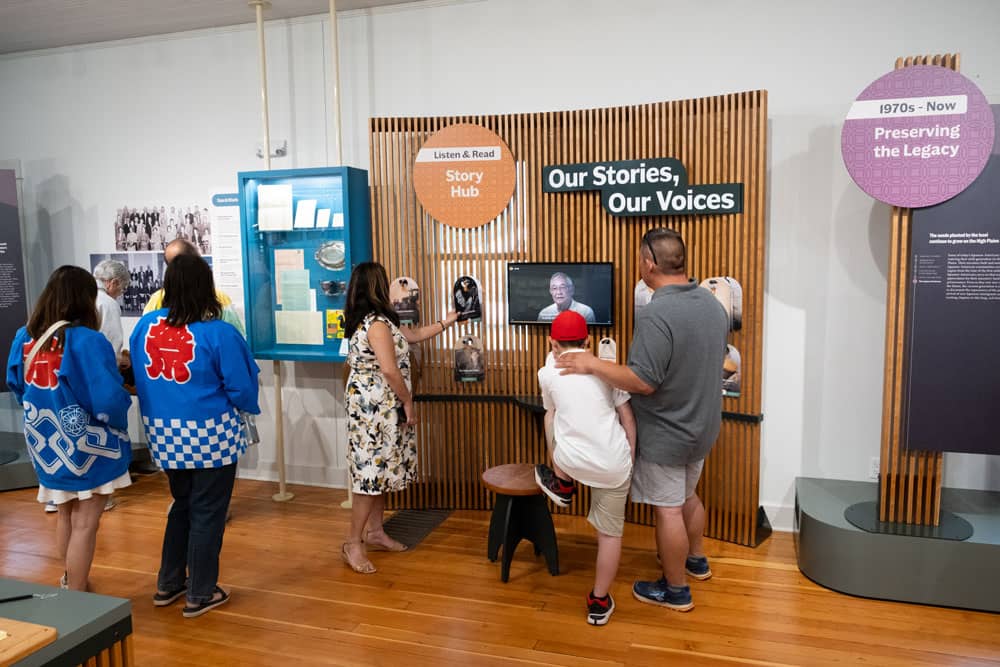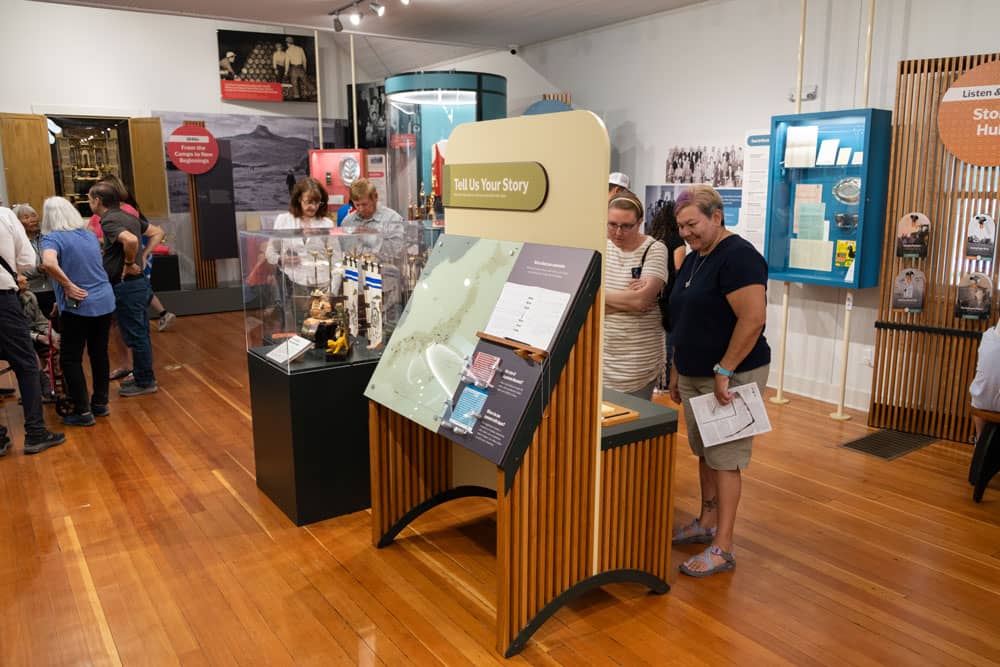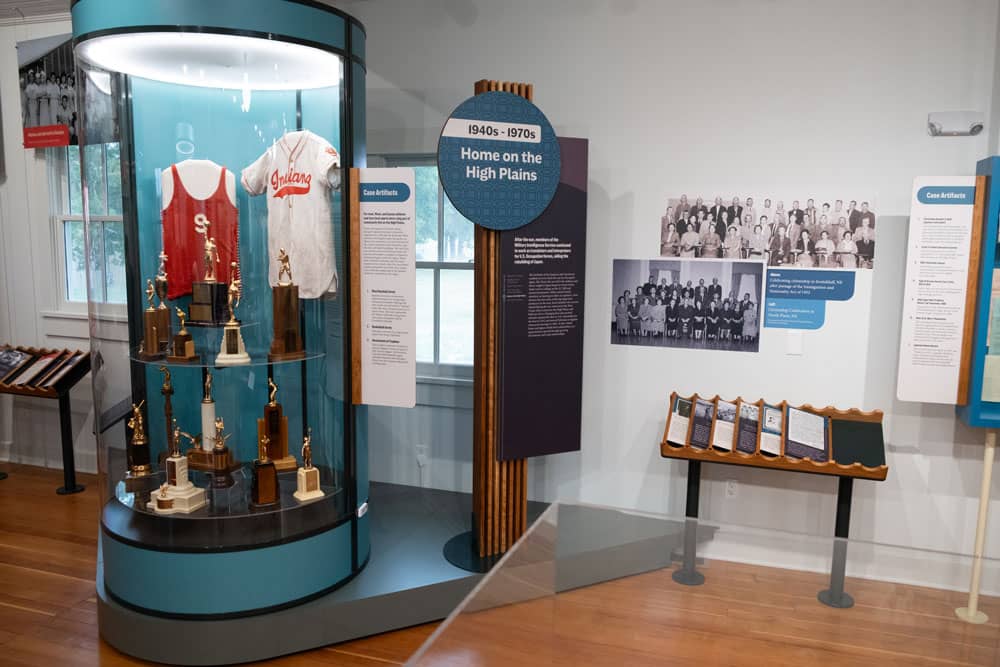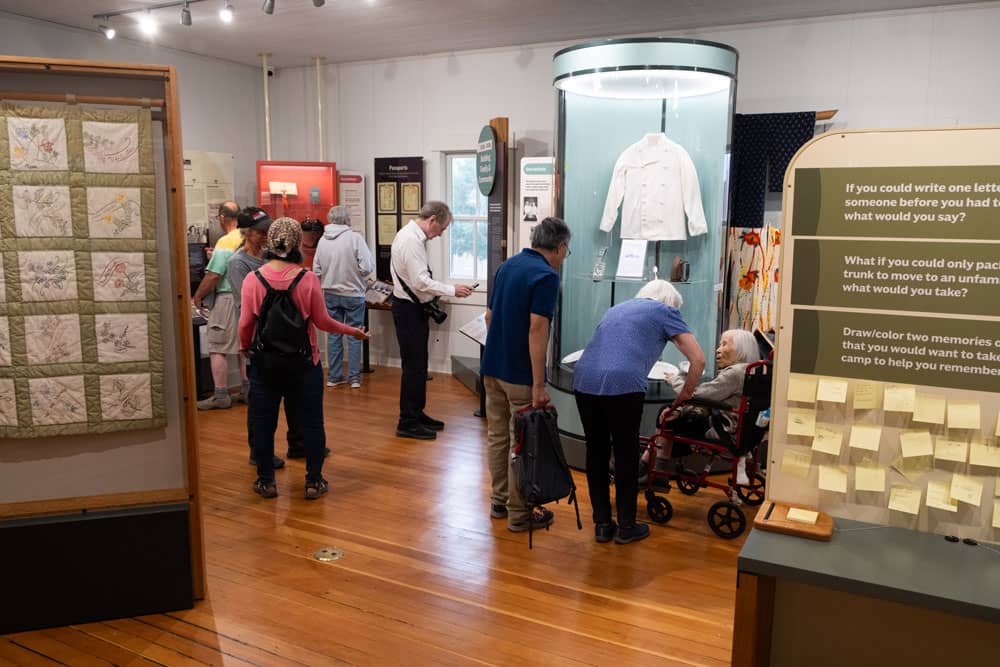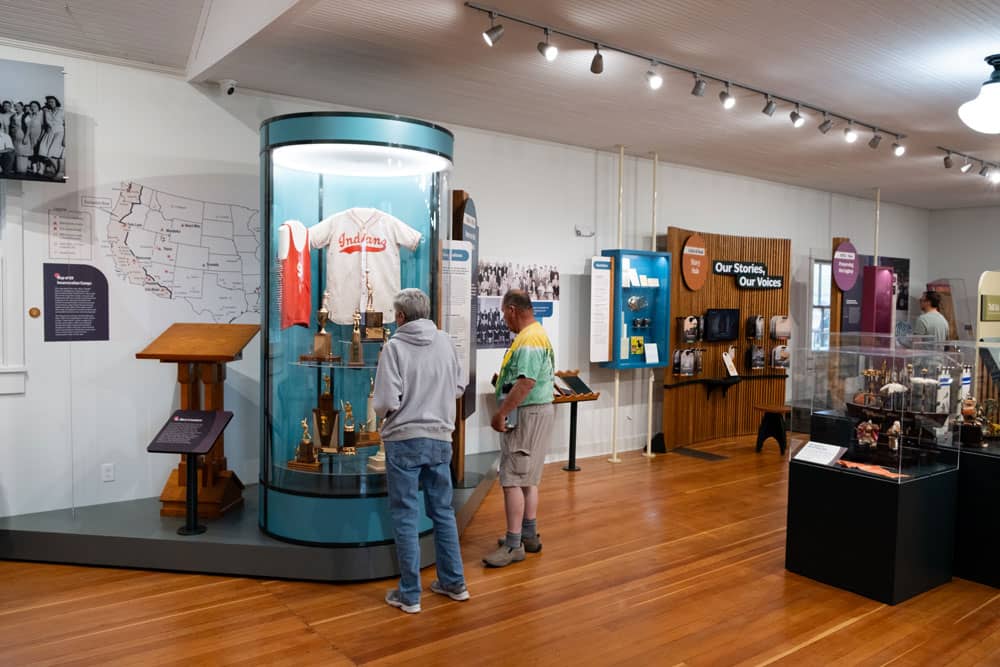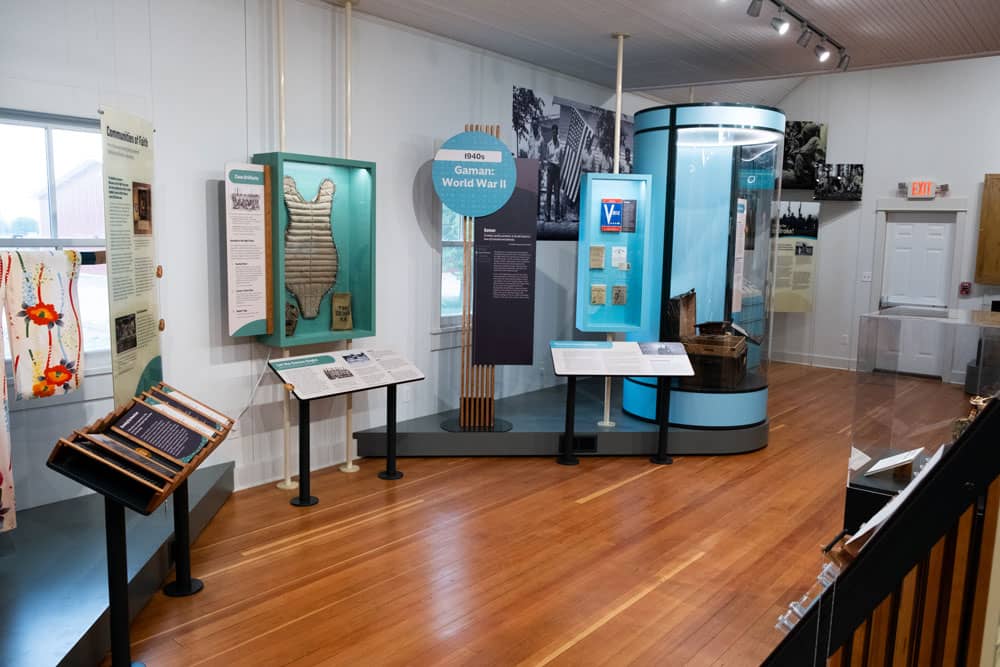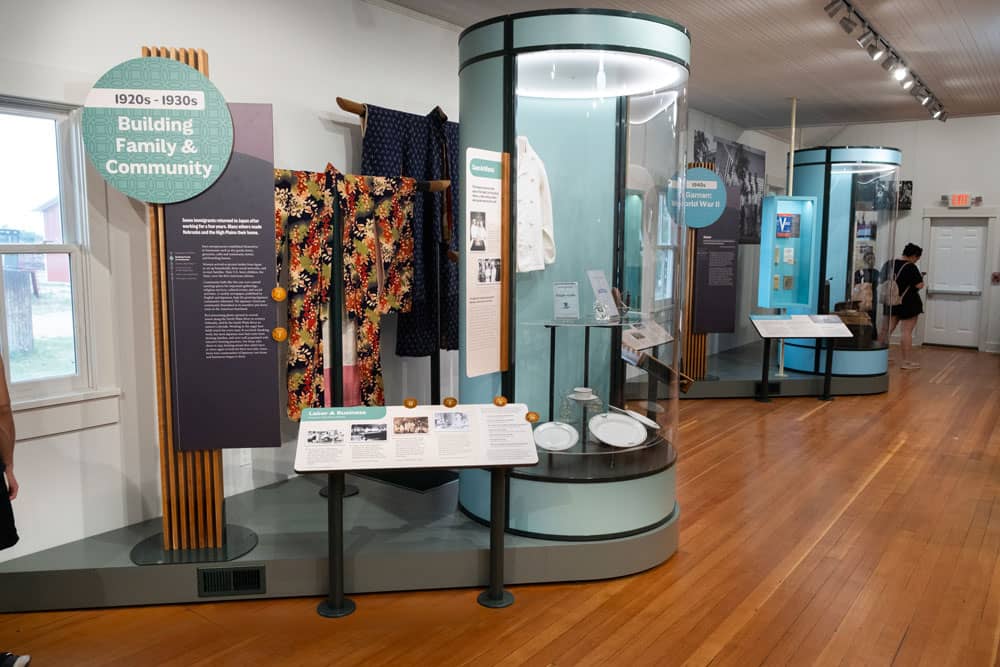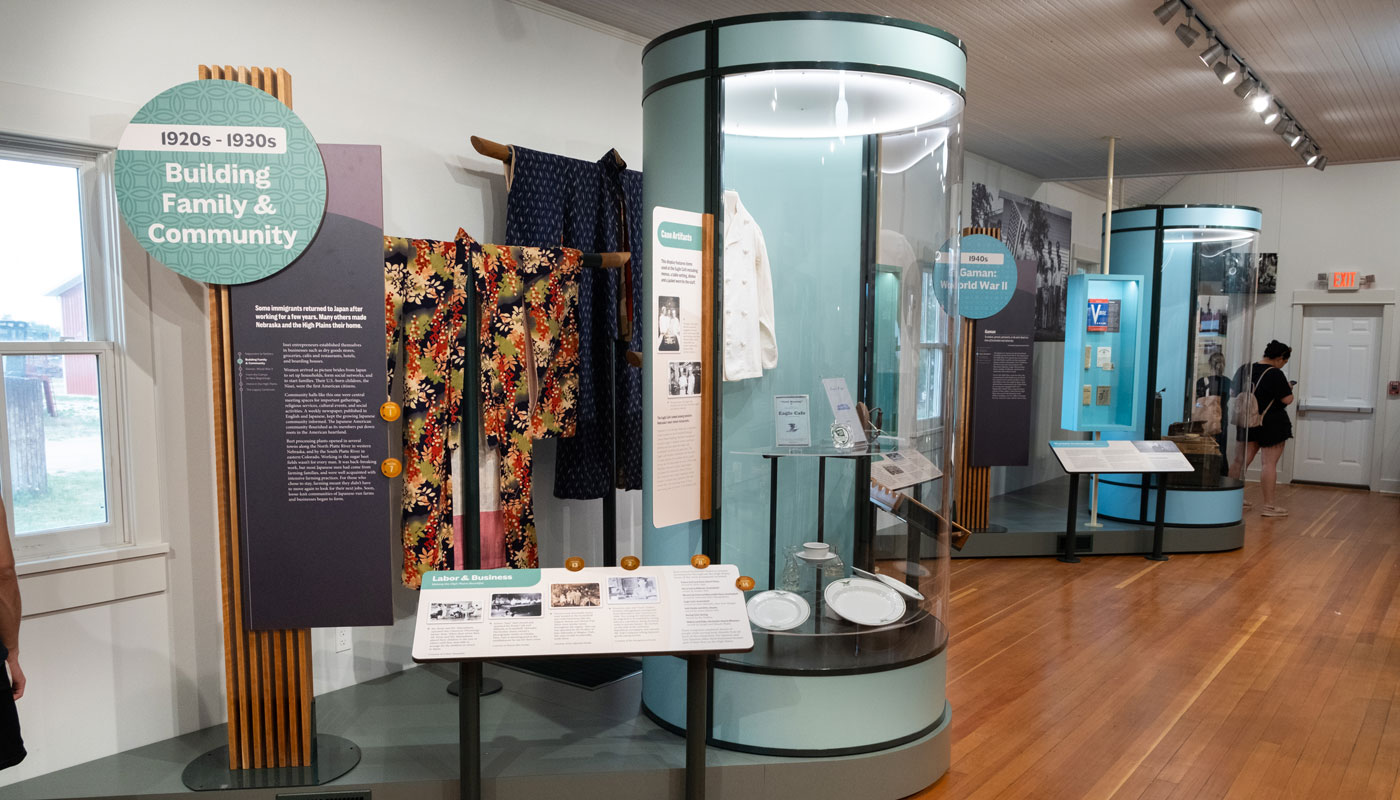
Legacy of the Plains Museum, Gering, NE
Japanese Hall Museum
The Japanese Hall at the Legacy of the Plains Museum in Gering represents the history of Japanese immigrants in Nebraska and the High Plains. The Hall had been moved to the museum grounds from its original site four miles away in nearby Scotsbluff and many of its original features restored. With a collection of artifacts and an abundance of stories to tell, they wanted to fill the space with interpretation and displays spanning the history of Japanese immigrants.
Some inital exhibit work in the entryway had previously been done by another design firm, but we picked up the project and created the bulk of the exhibits throughout the space.
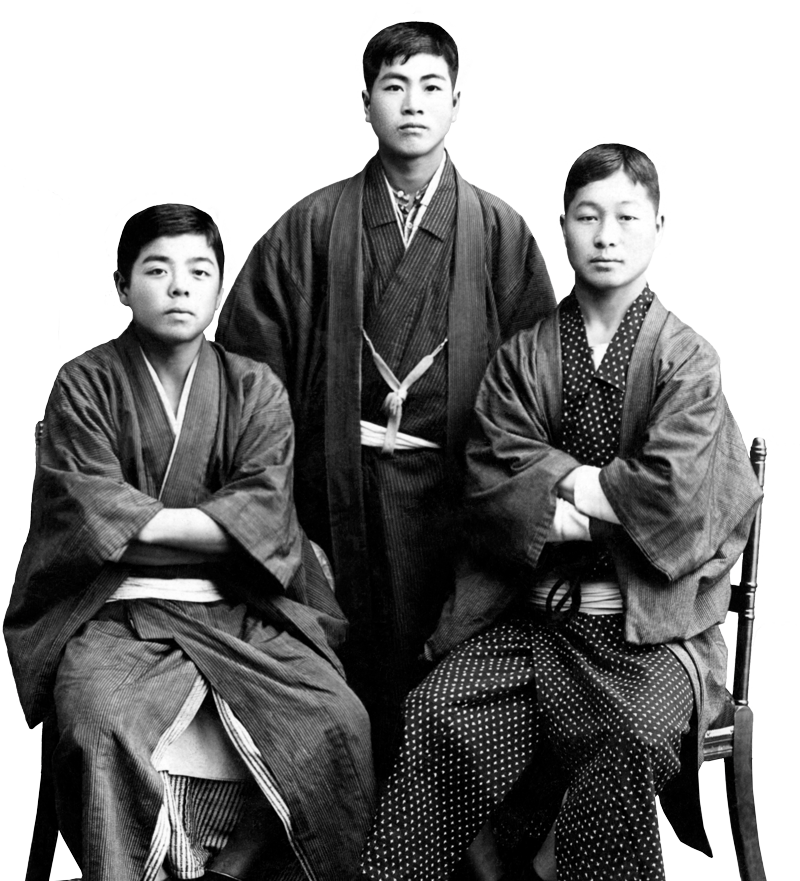
A Rich History
Spurred by higher wages in the United States, men from Japan arrived in Nebraska and the High Plains following employment opportunities. Many came to the area as railroad construction workers and transitioned to farming. Women followed, often selected as "picture brides" to join the men.
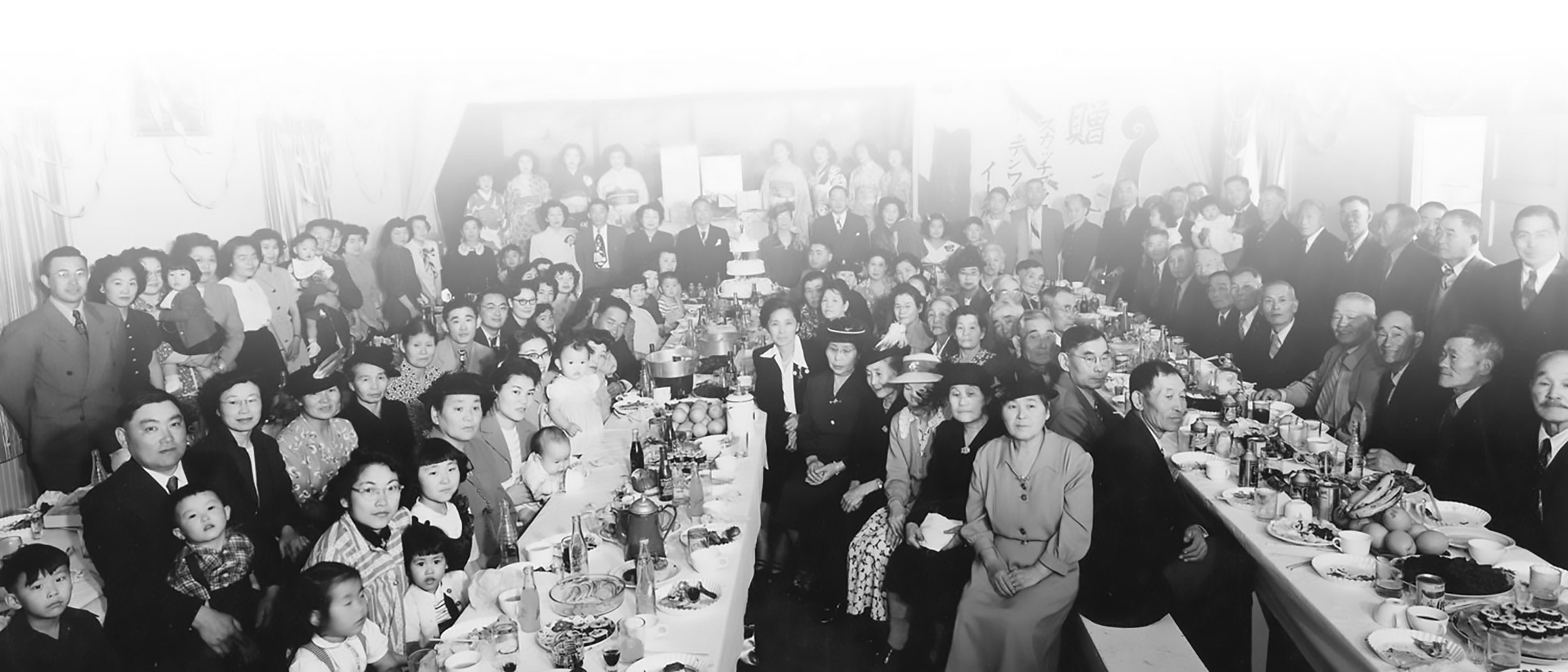
As Japanese communities were established places like this Hall were built to hold events and serve as centers for cultural activities and festivities.
The Hall itself is the preeminent artifact, so we purposefully designed and constructed exhibit components to preserve as much visibility of the restored interior as possible. Maintaining a sight-line from the doorway of the main space across to the shrine at the other end was critical. We sought to create beautiful displays that complemented the building rather than invading and detracting from it.
The story spans early immigration, discriminatory laws, building businesses, recreation, patriotism and involvement in U.S. military, internment camps, and the continued legacy of Japanese descendants.
We created a digital 3D model of the space and all exhibit componets as a way to visually share what we're designing.
We use this model throughout the design process, both internally and with our clients to show how the artifacts, graphics, and structures interact with one another.
Exhibit Interactives
We designed interactive elements to help visitors connect with the Japanese-American people from the community and show their own connection with Japan.
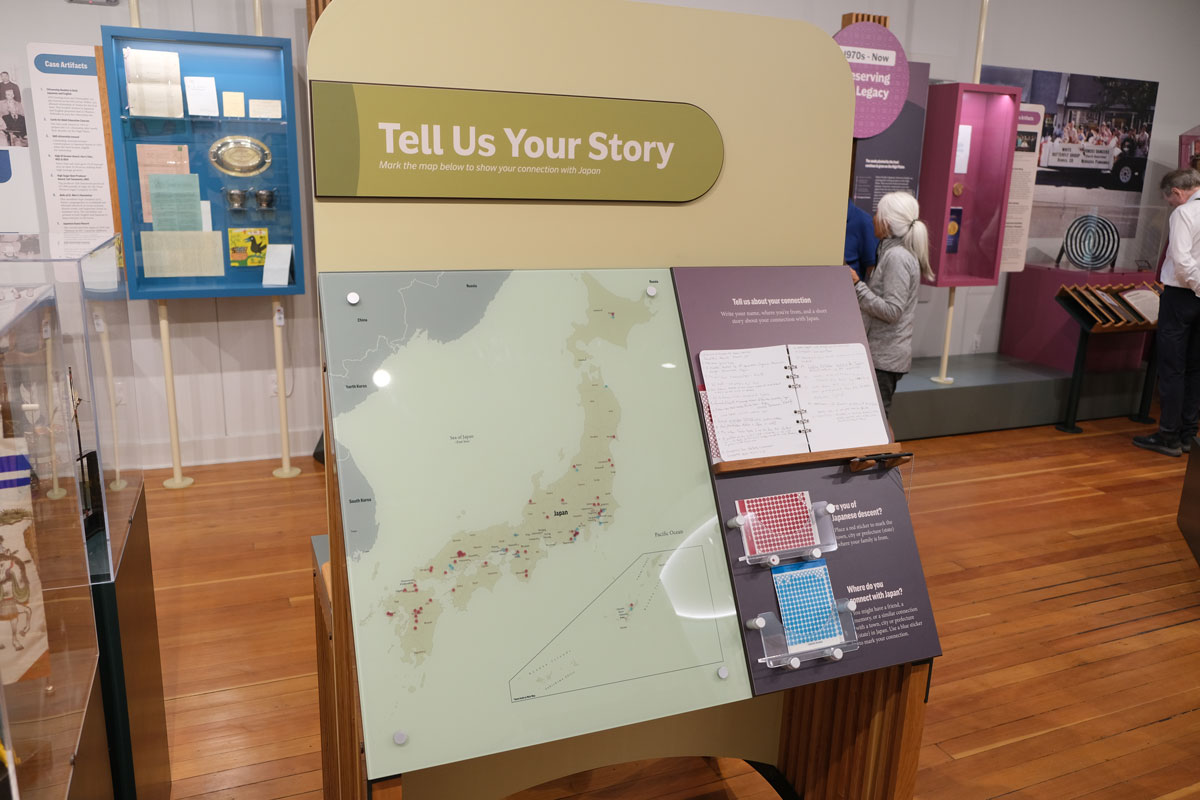
Interactive Map
The central area of the exhibit features two non-digital interactives, both of which are one opposite sides of the same structure. This approach minimized the physical footprint of the structure while still allowing for opportunities for visitors to leave their mark.
The map side features red and blue circular stickers - red stickers represent a familial connection with a city or town in Japan, blue represents a friend or memory from a city or town. Once the stickers have been placed on the map, visitors can write in the guest book to provide more details about their connection with Japan. The map is printed on the back of a piece of glass, so once the map has been largely filled out, stickers can be scraped off and ready for new visitors to share their stories.
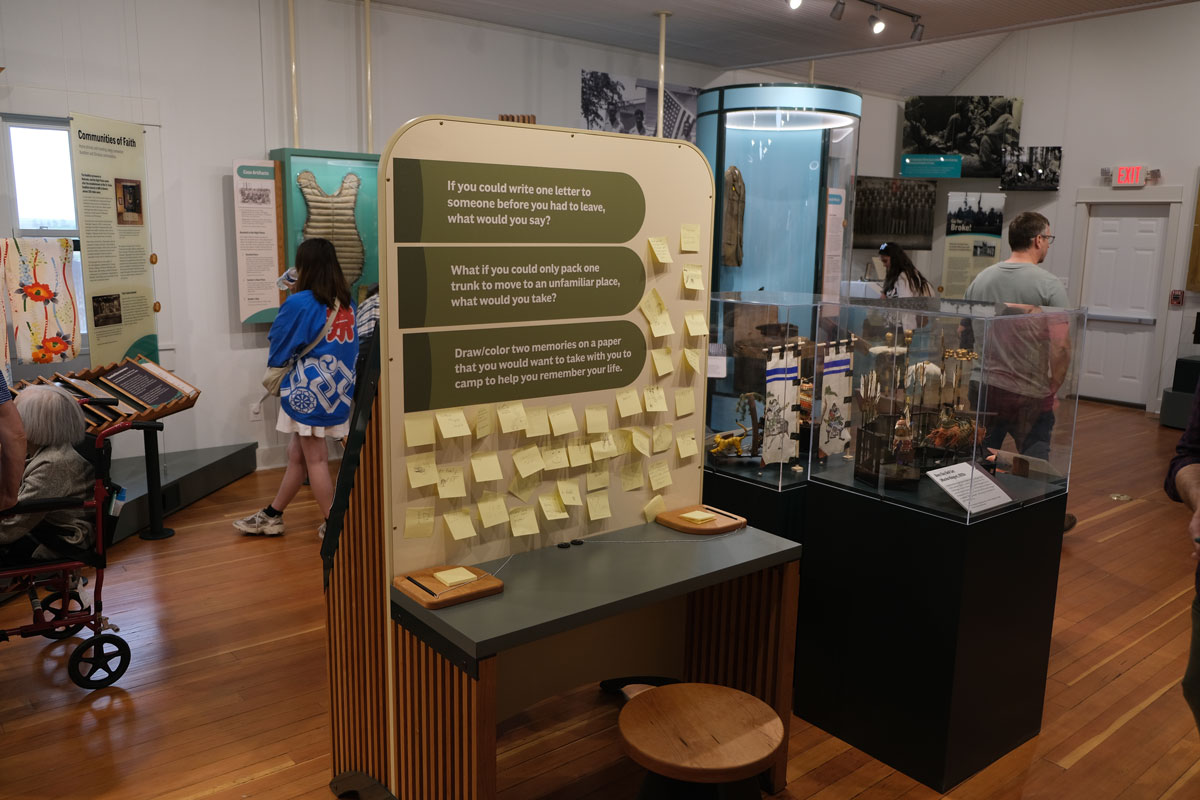
Response Area
Response side allows all ages to read a prompt then write or draw their responses on sticky notes to stick on the board. Prompts are printed to a magnetic material and can be easily produced with new questions or even instructions for visitors. The width of writing surface allows for up to two people to use it comfortably and the height makes it easily usable by younger children or those in wheelchairs.
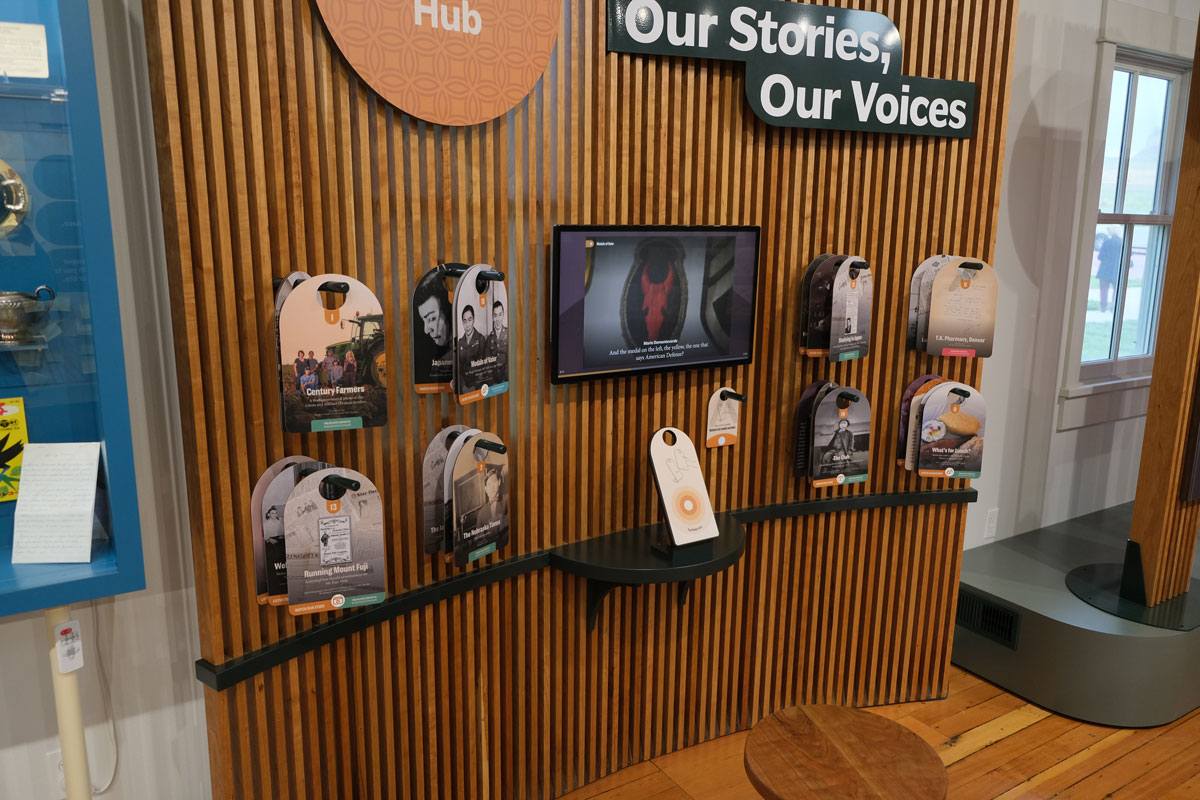
Story Hub
The Story Hub has a small library of cards visitors can pick up and read short histories of Japanese-American experiences. Some cards feature Near Field Communication (NFC) tags that can be scanned by a card reader in front of the screen. When scanned, these cards will trigger a video or audio file to play on the screen in front of the visitor. We designed a custom user interface to match the vistual design of the rest of the exhibit and added subtitles to video and audio elements for accessibility.
Looking to transform your space?
Contact Us →
